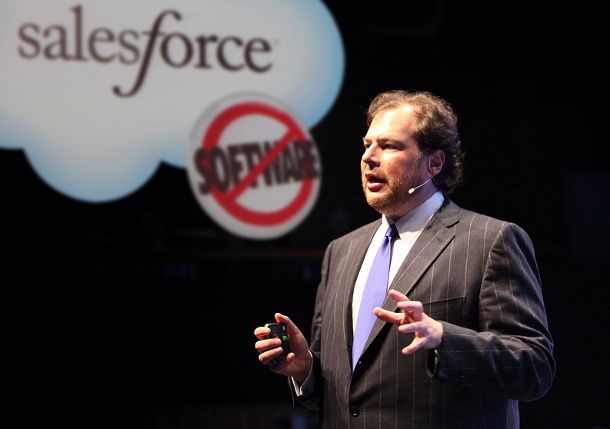B2C vs. B2B Sales Strategies: 5 Critical Differences
Author Robert Louis Stevenson once stated that “everyone lives by selling something.” No matter the products or services you’re selling, sell them better and you’re likely to live better. When formulating an ideal sales strategy, what you are selling matters less than to whom you are selling. Namely, are you targeting consumers (B2C) or other businesses (B2B)?
Here are some key differences between B2C and B2B sales strategies:
Price Points
While some consumer purchases have high price points – think 40-foot yacht – it’s generally true that B2C price points are much lower. Even a major B2C purchase such as a new car, for example, is tiny compared to the capital that changes hands monthly in large B2B
enterprise software or services businesses, where contracts are routinely in the six or seven figures. That higher price point is the driving force behind the need for B2B strategies such as lead nurturing, which entails wooing them with content marketing, and building consensus among multiple decision makers at a company over time.
Sales Cycle: Shorter Vs. Longer
The standard rule is that B2C sales cycles are short, while B2B sales cycles are long. While this tends to be the case, we like to use the words “shorter” and “longer” because, as consumers become more adroit at conducting online research prior to making even small purchases, their sales cycles are growing more complex as well.
On the B2B side, it’s likely that businesses interested in purchasing your goods and services have not only researched you, but have also researched your competitors. If you have clear value propositions and stellar content marketing, your B2B target may be darn-near sold before the first sales contact. In that case, you may have no more than one or two chances to make or break the deal.
However, this best-case scenario isn’t as common as you’d like it to be. If you have a complex product, and you’re selling to a business, gear up for a long sales cycle. This may mean that marketing needs to be able to deliver the necessary materials – be in a lead nurturing campaign, or an ROI calculator – to court prospects over time, nudging them gradually toward signing those big contracts.
Sales Tactics: Seeking an Emotional Response vs. a Rational Response

Salesforce.com’s Marc Benihoff
Back before “cloud” was a widely understood term, Salesforce.com CEO Marc Benioff created a revolutionary concept and was able to do a great job of selling businesses on its transformative power. In the early days, it could be argued that the company’s vision, and his ability to articulate it, was even superior to its product. Benihoff understood the power of eliciting an emotional response from buyers though branding, and over the years he cultivated a cult-like following of companies that wanted to be part of what was billed as nothing less than a war against the chains of hardware and inflexible IT operations. Fortunately, he was also able to show how moving to the cloud would also save money.
A few years back, I remember purchasing a Dos Equis beer at an after-work mixer directly because of their brilliant “Most Interesting Man in the World” campaign. I knew the marketing was working its magic, but I didn’t care. Dos Equis’ campaign was able to connect with me emotionally, and I therefore chose to purchase their beer.
This isn’t always enough in B2B. In addition to a compelling vision, your goal should be to convince the C-Suite that your goods and services benefit their bottom line. You must make a rational case to key decision makers, convincing them that if they sign a deal with you, it will benefit their bottom line. This can be accomplished through evidence-based pitches paired with successful content marketing and an aggressive follow-up strategy.
Necessary Experience Through Training & Proofs of Concept
B2C Sales training often amounts to a day of power-point presentations before being sent to the front lines. On my first day at a phone-based B2C sales job, my boss told me that his trick was that he speaks to consumers in what he called his “Grandma” voice, meaning the same voice he used to speak to his grandmother. He felt that it put the clients at ease. Not exactly the pinnacle of strategic selling.
But when you are talking to the CEO of an enterprise company, developing the right personality and tactics to close big B2B deals is not something that happens overnight. It often requires longer training periods, more field experience and extensive mentoring for a sales professional to reach the level of proficiency required to close big deals. More than anything, you’ll need proofs of concept that you know inside and out.
Key Word: “Partnership”
When you purchase a $1,000 TV, it’s mainly a one-time decision. If the company you bought it from is very sophisticated, they will find ways to keep you coming back for more, but it’s less common than you would imagine.
Nearly every deal in the B2B world is more than just a sale – it’s a partnership. You’re providing a product or service that will help the company you’re selling to be more productive. And when the price points are in the six, seven and eight figure range, it had better do the job. Losing a single client over a fracture in the customer or client relationship can be devastating, leading to restructuring and even layoffs. That’s why in B2B it’s not only important to acquire new customers, it’s sometimes even more important to keep those that you have.